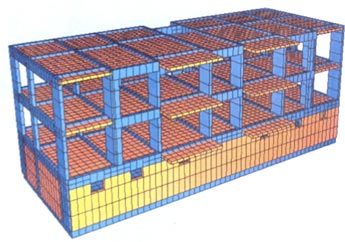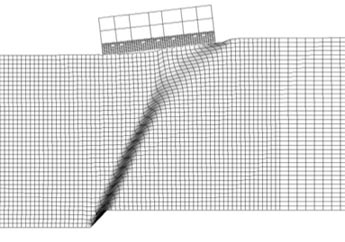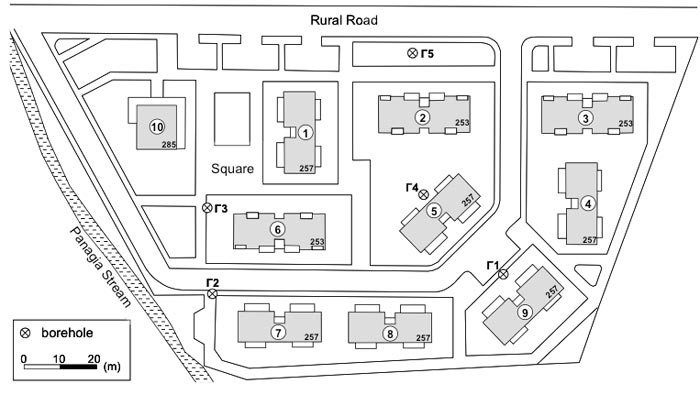Seismic Hazard Assessment and Design of Ο.Ε.Κ. Buildings to withstand Tectonic Dislocation of the Atalanti Fault (2002-2003)
The scope of this research project was to rationally design the buildings of an OEK (the Workers Housing Organization of Greece) housing complex in the region of Atalanti (Central Greece) against large tectonic deformation. Building was first attempted in 1986, but due to the proximity with the notorious Atalanti fault (which generated two Ms 6.9 earthquakes in 1894), it was abandoned for many years. In 2003, it was decided to put an end to the long-lasting debate on seismic hazard, and design the buildings against a possible fault rupture. For this purpose, in this research project a two-step numerical analysis methodology was applied to analyze different building types subjected to normal faulting, and design their foundation and superstructure to withstand this “peculiar” loading. In the first step, a represantive slice of the soil-foundation-structure system was analyzed in 2D (assuming plane-strain conditions), modeling in detail Fault Rupture-Soil-Foundation-Structure Interaction (FR-SFSI). Soil behavior was modeled with an experimentallyt-validated modified Mohr-Coulomb constitutive model with isotropic strain softening [Anastasopoulos et al. 2007]. Then, in the second step, the superstructure was analyzed in 3D, subjected to the deformation field (vertical and horizontal displacement) computed in the first step. This way, FR-SFSI was realistically taken into account, leading to rational design of superstructure elements and their reinforcement.



